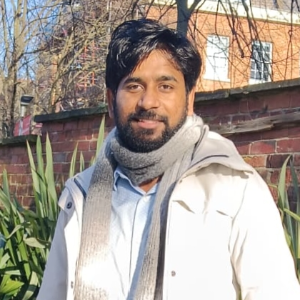Title : Investigating the electrochemical potential for mesoporous sugarcane bagasse biochars as supercapacitors
Abstract:
The transformation of waste obtained from biomass into usable commodities with enhanced performance is an essential undertaking. In this work, we produced mesoporous biochars with customisable surface areas and pore structures from lignocellulosic biomass waste. Biochars were created by varying the feedstock and sacrificial templating agent (KOH) mass ratios, the resulting materials were characterized by FTIR, XRD, TGA, Nitrogen physisorption, Elemental Analysis and FESEM. Electrochemical measurements were then carried out to investigate the charge storage ability of the material through galvanometric charge-discharge (GCD) and cyclic voltammetry (CV). It was found that the biochar’s structure would develop upto a KOH concentration of 0.5 M before structural collapse took place, destroying the pore structure and diminishing the available surface area. Capacitance calculations show that a maximum charge storage ability was achieved (490 F g-1) at a current density of 0.5 A g-1, with the highest surface area biochar (1669 m2 g-1) and smallest pore size (2 nm). This biochar was found to exhibit a 93.2% retention rate after 2000 cycles, thus making it an excellent cycle stability material for supercapacitors. This translates to an energy density of 136.17 Wh kg-1 at a power density of 500 W kg-1, when used in a redox electrolyte (KOH). Overall, capacitance was found to follow a downward trend with respect to structural collapse. This work offers a novel and sustainably strategy of producing customisable supercapacitor materials from biomass waste, as a result enable a wider application of these materials in the quickly developing and essential energy storage market.
Audience Take - Away:
- To provide a new approach to sustainable energy storage options, the presentation shows how sugarcane bagasse waste may be converted into activated mesoporous carbon materials with improved electrochemical performance.
- This study offers insightful information and useful approaches that other academics could apply to broaden their studies in fields about the use of biomass waste, the synthesis of carbon materials, characterization methods, and energy storage applications. This would enhance their research as well as their efforts to teach.
- By showing how biomass waste may be converted into high-performance carbon materials for supercapacitor applications, this research provides a workable alternative and may make it easier for designers to find effective and sustainable energy storage solutions.




